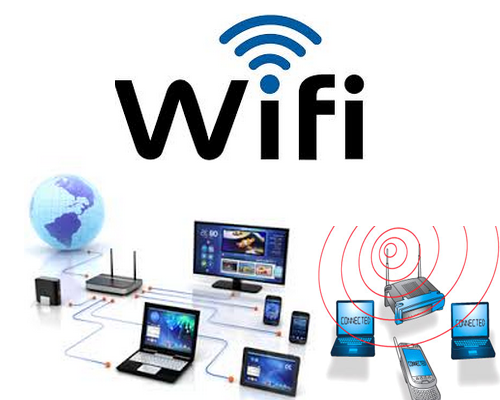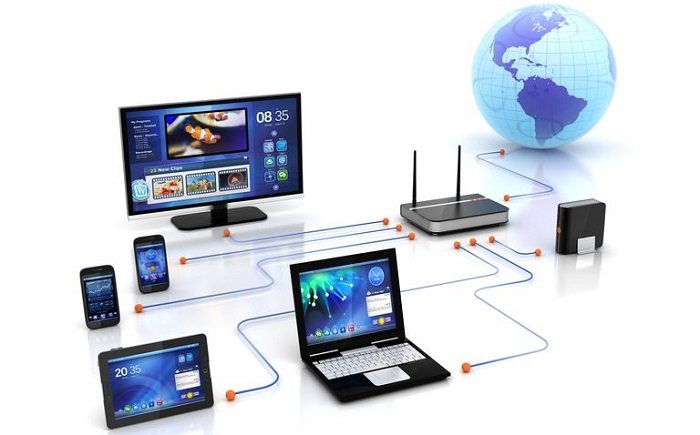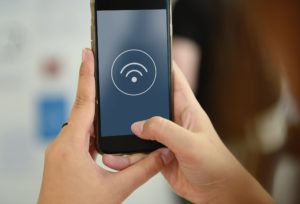How Does WiFi Connection Work? | How Wifi Router Works
Table of Interests
Today, you and I will quickly take a look at the topic “How Does WiFi Connection Work? | How Wifi Router Works”.
This has become necessary as we have sen overtime that several individuals have been searching for topics related to the above topic How Does WiFi Connection Work? | How Wifi Router Works.
However, if you are among those that have been searching for answers to [how does wifi work diagram, how does wifi router work, how does wifi work on cell phones, how does wifi work on laptops, wifi working principle, how wifi works pdf, where does wifi come from, how does wifi signal travel, How Does WiFi Connection Work? | How Wifi Router Works], then you can see that you are not the only one.
Nonetheless, you shall get all this information right here on this blog.
How Does WiFi Connection Work? | How Wifi Router Works

Are you ever on your laptop connected wirelessly to your router and wonder how in the world are videos being sent to you through the air and onto your computer?
Most of us take our Wi-Fi connections for granted.
If you think about it, we pretty much have access to almost all of the information in the world that has ever existed and it’s at just a touch away and it travels through the air to get to us.
How In The World Does This Work?
Wi-Fi is an abbreviation of Wireless Fidelity
Wi-Fi is essentially pulses of energy transmitted by a router to your device. These pulses of energy are electromagnetic waves.

To know how Wi-Fi works, let’s get on to some history.
Before Wi-Fi became famous, people used Ethernet connections to connect to the Internet. Ethernet is a wired connection and uses pulses of electricity to feed binary data from the internet to your computer.
A high electric pulse indicated binary 1 why the low pulse indicated binary 0. The installation of Ethernet is kinda complex.
Wi-Fi then came to make things easier, more users can be connected without using a wire which is more comfortable. It doesn’t use wires or electric pulses, it uses electromagnetic waves to transmit binary information to your computer.
The slower the pulse, the lower the frequency.
See Other Articles Others Are Reading
- History As A Science | What Makes History A Science
- Fire And Safety | Basic Fire Safety Tips & Fire Safety Rules
- Myths Surrounding Exercises | All You Need To Know Concerning Exercises.
- Criminal Profiling – Facts Over Fiction | Criminal Profiling Techniques
- 5 Tips For Students Who Are Considering Graphic Design As A Career.
- Evaluation Of Learning: How To Know If The Children Are Learning
Step-by-step Process Of Communication
Binary data from the internet comes to the Wi-Fi router via an Ethernet connection, the router or modem then converts 1s and 0s binary data into high and low pulses of electromagnetic waves.
This wave pulses are received by a computer or smart phones wireless adapter, the wireless adapter then converts the wave pulses into binary language that a computer can understand.
Within the wave pulses, there are a set of instructions that talk to your computer and tells it what to do.
These instructions are actually very basic.
They are put into a code that can be read by your computer processor which only needs two different modes. “1” mode is a code that tells your computer “ON” and the other is a code that tells it “OFF”.
These codes are symbolized by “1s” for ON and “0s” for OFF.

So for example, if I want to send an image to you, the image on my computer would first be broken down into packets of data using 1s and 0s.
It will then be sent to you from my computer’s Wi-Fi to my router and modem through the Ethernet and internet to your router and modem and finally pulsed out of as light from your router that your computer would pick up.
Your computer would then unpack the information sent as 1s and 0s into an image.
This process is actually very similar to how the email works. However luckily for us, Wi-Fi travels at the speed of light which makes it easy for huge amounts of information to travel very fast.

To simplify this, we can look at the Wi-Fi router as an antenna that vibrates at a certain frequency for a certain piece of data.
Your computer also has a similar antenna that vibrates at the exact same frequency as that of the router and thus the data from the internet is transferred to your computer wirelessly.
Basically, the Wi-Fi modem via its electromagnetic pulses instructs your computer on what to do with each pixel on the screen.
The frequency of these vibrations or electromagnetic pulses is generally kept at 2.4 gigahertz or 5 gigahertz to avoid interference with electromagnetic waves from other devices like microwaves or mobile networks or even other Wi-Fi networks.
How sometimes can you get great signals 2 floors up but none in the room next door?
As Wi-Fi travels out from it source, it is affected by the objects it encounters, objects like concrete, wood or other Wi-Fi.
Also if there are a lot of Wi-Fi signals near you, parts of your signal can be delayed by bumping into those, making your pages load in a more jittery way.

Interestingly, you can actually buy Wi-Fi paint which blocks other signals from interfering with your Wi-Fi signal. So you’ve protected your Wi-Fi signal when it’s coming through strong.
That’s the much we can take on the topic “How Does WiFi Connection Work? | How Wifi Router Works”.
Thanks For Reading
See Other Articles Others Are Reading
- History As A Science | What Makes History A Science
- Fire And Safety | Basic Fire Safety Tips & Fire Safety Rules
- Myths Surrounding Exercises | All You Need To Know Concerning Exercises.
- Criminal Profiling – Facts Over Fiction | Criminal Profiling Techniques
- 5 Tips For Students Who Are Considering Graphic Design As A Career.
- Evaluation Of Learning: How To Know If The Children Are Learning

Perfectly written.
Thanks For Coming around @projecttopics
You’ve got a nice site